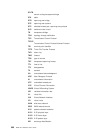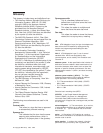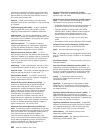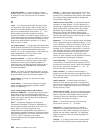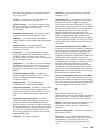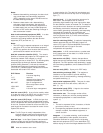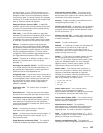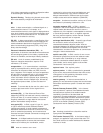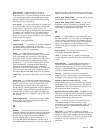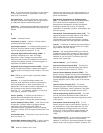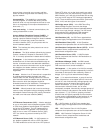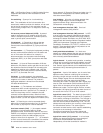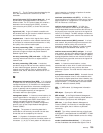Notes:
1. Between data switching exchanges, the data circuit
may include data circuit-terminating equipment
(DCE), depending on the type of interface used at
the data switching exchange.
2. Between a data station and a data switching
exchange or data concentrator, the data circuit
includes the data circuit-terminating equipment at
the data station end, and may include equipment
similar to a DCE at the data switching exchange or
data concentrator location.
data circuit-terminating equipment (DCE). In a data
station, the equipment that provides the signal
conversion and coding between the data terminal
equipment (DTE) and the line. (I)
Notes:
1. The DCE may be separate equipment or an integral
part of the DTE or of the intermediate equipment.
2. A DCE may perform other functions that are usually
performed at the network end of the line.
data link connection identifier (DLCI). The numeric
identifier of a frame-relay subport or PVC segment in a
frame-relay network. Each subport in a single
frame-relay port has a unique DLCI. The following table,
excerpted from the American National Standards
Institute (ANSI) Standard T1.618 and the International
Telegraph and Telephone Consultative Committee
(ITU-T/CCITT) Standard Q.922, indicates the functions
associated with certain DLCI values:
DLCI Values Function
0 in-channel signaling
1–15 reserved
16–991 assigned using frame-relay
connection procedures
992–1007 layer 2 management of
frame-relay bearer service
1008–1022 reserved
1023 in-channel layer management
data link control (DLC). A set of rules used by nodes
on a data link (such as an SDLC link or a token ring) to
accomplish an orderly exchange of information.
data link control (DLC) layer. In SNA, the layer that
consists of the link stations that schedule data transfer
over a link between two nodes and perform error control
for the link. Examples of data link control are SDLC for
serial-by-bit link connection and data link control for the
System/370 channel.
Note: The DLC layer is usually independent of the
physical transport mechanism and ensures the
integrity of data that reaches the higher layers.
data link layer. In the Open Systems Interconnection
reference model, the layer that provides services to
transfer data between entities in the network layer over
a communication link. The data link layer detects and
possibly corrects errors that may occur in the physical
layer. (T)
data link level. (1) In the hierarchical structure of a
data station, the conceptual level of control or
processing logic between high level logic and the data
link that maintains control of the data link. The data link
level performs such functions as inserting transmit bits
and deleting receive bits; interpreting address and
control fields; generating, transmitting, and interpreting
commands and responses; and computing and
interpreting frame check sequences. See also
packet
level
and
physical level
. (2) In X.25 communications,
synonym for
frame level
.
data link switching (DLSw). A method of transporting
network protocols that use IEEE 802.2 logical link
control (LLC) type 2. SNA and NetBIOS are examples
of protocols that use LLC type 2. See also
encapsulation
and
spoofing
.
data packet. In X.25 communications, a packet used
for the transmission of user data on a virtual circuit at
the DTE/DCE interface.
data service unit (DSU). A device that provides a
digital data service interface directly to the data terminal
equipment. The DSU provides loop equalization, remote
and local testing capabilities, and a standard EIA/CCITT
interface.
data set ready (DSR). Synonym for
DCE ready
.
data switching exchange (DSE). The equipment
installed at a single location to provide switching
functions, such as circuit switching, message switching,
and packet switching. (I)
data terminal equipment (DTE). That part of a data
station that serves as a data source, data sink, or
both. (I) (A)
data terminal ready (DTR). A signal to the modem
used with the EIA 232 protocol.
data transfer rate. The average number of bits,
characters, or blocks per unit time passing between
corresponding equipment in a data transmission
system. (I)
Notes:
1. The rate is expressed in bits, characters, or blocks
per second, minute, or hour.
2. Corresponding equipment should be indicated; for
example, modems, intermediate equipment, or
source and sink.
datagram. (1) In packet switching, a self-contained
packet, independent of other packets, that carries
information sufficient for routing from the originating
data terminal equipment (DTE) to the destination DTE
without relying on earlier exchanges between the DTEs
696 MRS V3.2 Software User’s Guide



